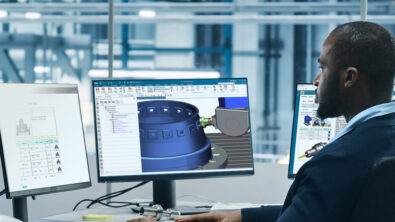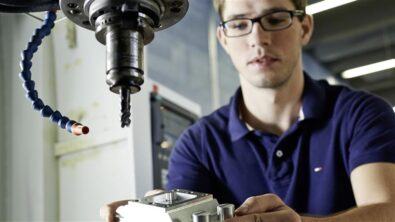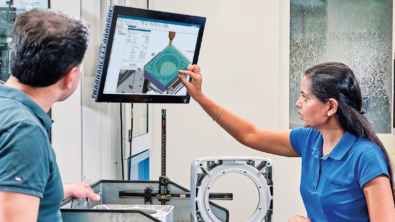Roughing and Re-roughing

In NX CAM we refer to a specific set of machining instructions as an operation. For example, finish-milling a planar face would be one operation. To spotdrill, drill, and bore a hole requires three separate operations. Other software packages refer to operations as jobs or tasks. It is important to distinguish between operations and cut patterns. In a previous post, I talked about different types of cut patterns. In NX CAM, those cut patterns are available in several different operations – I can use the Zig-Zag cut pattern in both roughing and finishing operations.
Today I will address roughing and re-roughing (aka re-machining) operations. Michelangelo was once asked, “How do you carve an elephant?” He answered, “Take a large stone and carve away everything that is not the elephant.” That is the essence of rough machining – take away everything that is not the finished design.
I don’t have an elephant to carve (sorry), but I do have a mold cavity, and some stock that the mold will be made from.
Here is how re-roughing works: the NC Programmer starts with a large diameter endmill to remove material. That is followed by a smaller diameter endmill that can reach into places the larger tool could not. This process can be repeated as necessary until the part is ready for finish machining. I usually reduce diameters by about ½ for each new tool, so if the first endmill is 40mm in diameter, then the second is 20mm, and the third is 10mm.
The following video demonstrates a roughing operation followed by two re-roughing operations. Pay particular attention to the three ribs at the bottom of the cavity.
Here are the three ribs as in the design file.
Here is a closeup of the aforementioned ribs after the last re-machining operation.
NX CAM is aware of the in-process work – in other words, it knows where excess material has been left by the previous operation, and ONLY creates tool paths in those areas. That eliminates wasteful “air-cutting” and decreases overall machining time. Re-roughing allows the most efficient (largest possible) tool be used wherever possible.
Re-machining is a good strategy for efficient roughing. In my next post, I will examine an alternative form of roughing deep cavities.
Thanks for reading.
About the Author
 | Jim Wright has a Master’s degree in Business Administration from the University of Central Missouri. He has over 30 years of experience in the manufacturing industry, and over 25 years of experience in the CAD/CAM field. He serves as Field Support for Siemens PLM CAM products. Prior to his current role, he held stints as CNC Programmer, CAD/CAM Department Manager, CAD/CAM instructor, and Project Coordinator for Siemens PLM CAM software development. |
Comments
Leave a Reply
You must be logged in to post a comment.







Hi
In roughing process rouhging end mills removes the bulk material. These NC sequence types are create specifically for high-speed mold machining, and especially for machining imported . Roughing and Reroughing NC sequences can directly machine models consist of facet data in STL form. keep sharing
DIC TOOLS INDIA
https://dictoolsindia.com/hss-cutting-tools/roughing-end-mills.php